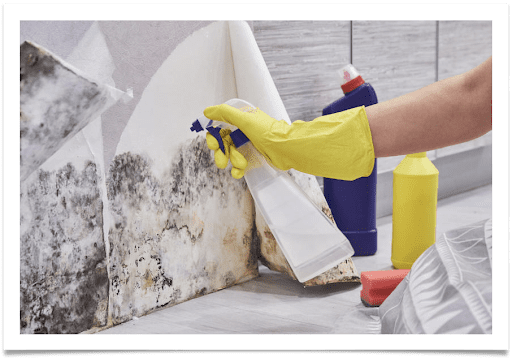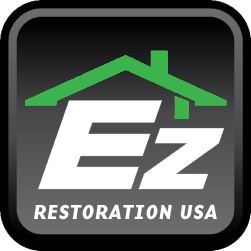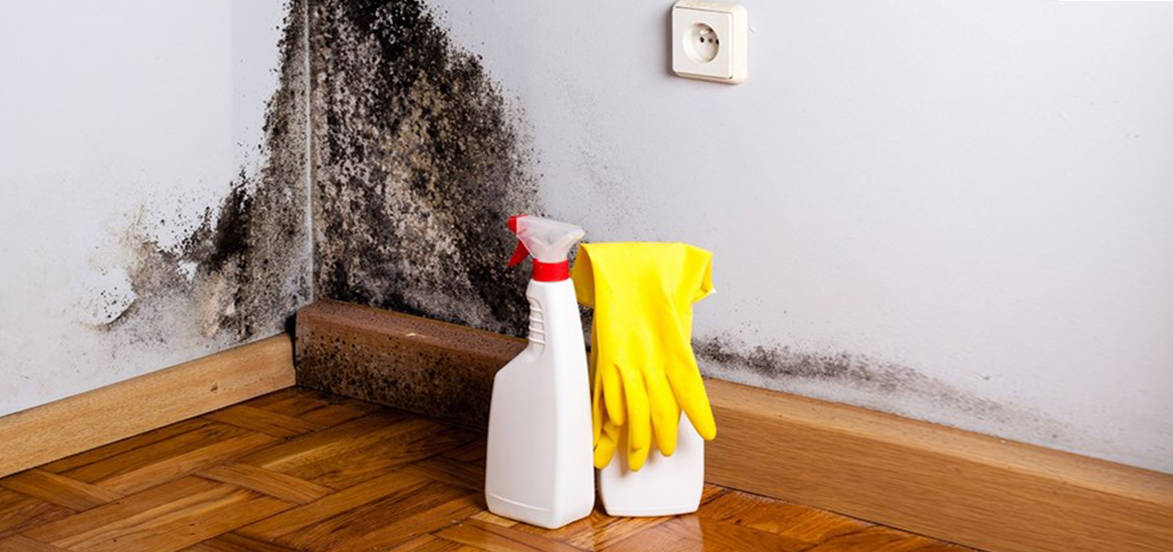How to Remove Mold from Walls?
Mold is a fungal growth that grows and spreads on moist or decomposing organic waste. Excess moisture is the most common cause of indoor mold formation. Molds multiply by sending small spores into the air, where they drop in other places. The spores can develop new mold colonies when they land on wet or moist surfaces. Most office buildings are favorable for mold growth due to their moderate temperatures and readily available nutrition supplies. Thus, the quick removal of mold growth is crucial.
However, if you let it grow, some molds can become extremely dangerous to humans. Mold can induce allergic reactions, asthma, and other respiratory issues. Also, it is especially dangerous for small children, the elderly, and people who already have respiratory disorders or have compromised immune systems.
mold inspection California can happen in a variety of shapes and hues, none of which adequately identify the species of mold. It does frequently appear in various shades of black, white, green, or blue, as well as countless combinations of these and other hues.

Types Of Mold Hanpering Structural Integrity
Black Mold:
Black mold is frequently seen inside homes when there has been considerable moisture damage to the wallboard and other surfaces. Much is made of the “toxicity” of this sort of mold, yet the mold itself is not hazardous. However, depending on the species of mold, it has the ability to develop mycotoxins that can harm humans and pets. When eliminating molds, a good rule of thumb is to “take caution,” especially when there are a lot of them.
White Mold:
White mold is commonly found on walls and other structures in chilly, damp locations such as basements. It is frequently confused with efflorescence, a mineral deposit formed on foundation walls and other brick surfaces as a result of water seepage. You may test for mold by spraying it with water. If it dissolves, it is most likely a mineral deposit; if it does not dissolve, it is most likely white mold.
Green Mold:
Green mold, like blue mold, is highly widespread in homes and can be found in wet regions such as shower walls and damp corners. Green mold, like most molds, can be eradicated by scrubbing it away with a bleach solution.
Moisture Control:
There is no method to completely remove mold and mold spores indoors, according to the United States Environmental Protection Agency (EPA). Controlling indoor moisture is critical to mold control:
- Repair Water Leaks – Repair leaks as soon as you discover them. A leaky basement or roof not only causes immediate structural damage, but the wet regions allow mold to develop if not corrected. To avoid mold growth, clean and dry any moist or wet construction materials within 24 to 48 hours. If you don’t and mold infiltrates them, you must remove them to fully resolve the mold problem.
- Reduce Indoor Humidity – The more humid your home is, the more probable mold spores will thrive. Reduce humidity by improving ventilation in your home to protect the air from becoming hot and stagnant. Large appliances, such as washers and dryers, as well as your bathroom and kitchen, should be vented. To minimize moisture in the air, switch on air conditioners and dehumidifiers.
- Prevent Condensation – Insulate exterior walls, roofs, windows, and pipes to limit the possibility of condensation producing moisture.
Remove Mold From Concrete Walls:
Mold in your basement will be seen as black, white, or bluish areas on the walls. It can also grow on any organic material adjacent to the mold-covered areas, such as carpeting, cardboard boxes, etc. Remove the damaged artifacts from the wall and discard what you can. You can recover furniture with a thorough cleaning. But in some circumstances, you must discard it. Moving these objects will also give you more room to work when eliminating the mold.
Mold-killing commercial products are widely accessible. Bleach, on the other hand, is said to be the most effective way to destroy it, especially when accompanied by good old-fashioned vigorous scrubbing. In a bucket, combine one part bleach and three parts water. Scrub the mold-affected wall vigorously with the bleach/water solution using a scrub brush or heavy-duty sponge until the mold patches are gone. In certain circumstances, you may need to leave the solution on the wall for a few minutes after applying it to allow it to soak in. To get rid of difficult mold infestations, you may need to call mold removal specialists.
Safety Alert:
Wear rubber gloves to protect your hands and safety goggles to prevent bleach solution from splashing into your eyes. Wear a respirator mask or dust mask as well to avoid inhaling any mold particles that may get airborne. While working, if possible, ventilate the basement. Wear old clothes because you may get some bleach on yourself.
After scrubbing the afflicted walls, pat them dry with a towel and inspect the surface for any mold development that you may have missed. Put the stuff you moved back into the basement, but don’t put anything back that has mold on it.
Helpful Tips:
Purchase a dehumidifier for your basement to keep the air dry and mold-free as feasible. Keep a watch out for any basement leaks. To keep moisture and mildew out, you may need to cover your basement with a waterproof sealant before priming and painting.
Mold Removal From Drywall/Painted Walls:
Mold is frequently seen on drywall and painted interior walls, particularly in areas where moisture and humidity are present, such as kitchens and bathrooms. If water penetrates your roof or outside walls, it can cause damage to your walls.
Mold might begin to develop and permeate the drywall if the drywall remains damp. When this happens, the drywall must be removed and rebuilt for removal of mold in your homes.
If you find mold on any interior walls, evaluate the wall’s condition and the extent to which the mold has taken over. When the drywall is damaged, disintegrated, or bowed out and coated with black or bluish splotches, you must replace it. If the wall is structurally sound but moldy, you should be able to remove the spots using a cleanser and some scrubbing.
Safety Alert:
It is better that some mold get eliminated by professional mold remediation services because it can be dangerous. While it’s improbable, unless your property has substantial water damage from floods or another disaster, you won’t find a lot of this type of mold, sometimes known as “black mold.” If you have a huge amount of it throughout an interior area – more than 10 square feet, experts recommend that you get mold remediation services California to remove it.
Because you will be using bleach or industrial mold-killing chemicals to eliminate the mold, you must safeguard nearby surfaces, such as flooring, from any spillage that may cause damage. Cover the floor with plastic drop cloths and secure them with painter’s tape. So, they don’t move. It never hurts to have some old towels on hand to collect any spillage.
A bleach/water mix works best for eradicating mildew and mold off walls. Apply one part bleach to three parts water with a sponge or towel. A variety of commercial options are also available.
Safety Alert:
To protect your hands when cleaning with bleach or other cleaners, wear waterproof rubber gloves.
Helpful Tips:
Tile grout in kitchens and bathrooms can sometimes develop mildew patches. You can remove this using an old toothbrush. After you’ve washed the walls, wash them down.
After you’ve cleaned away the mold splotches, there may still be stains on the wall surfaces. Prime the wall with Interior Primer/Sealer before painting the topcoat with Interior Paint.
Keep an eye out for potential mold indicators by remembering where and how it can grow.
Conclusion:
If you notice mold growing on your home’s walls, you must act promptly before it spreads. These can harm your property’s health and structural integrity. According to the World Health Organization, for example, extended exposure to indoor dampness and mould is connected to a major portion of the world’s 300 million cases of paediatric asthma.
To avoid mold growth, the most important thing is to eradicate the root of the problem. You can then clean the form yourself or contact a professional for mold removal, depending on the size of the impacted area post mold detection.


